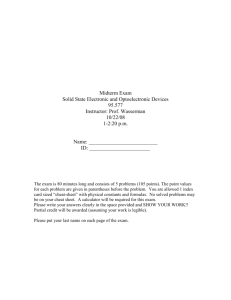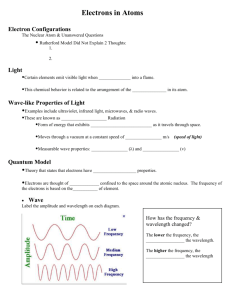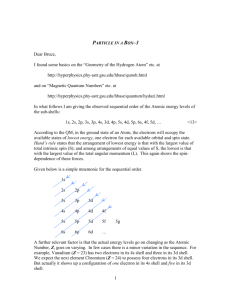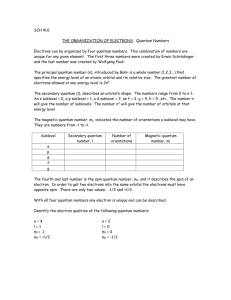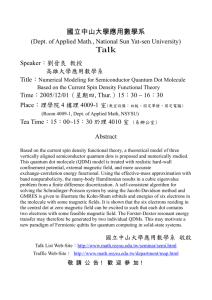TITOLO: Two-dimensional Mott-Hubbard electrons in an artificial
advertisement
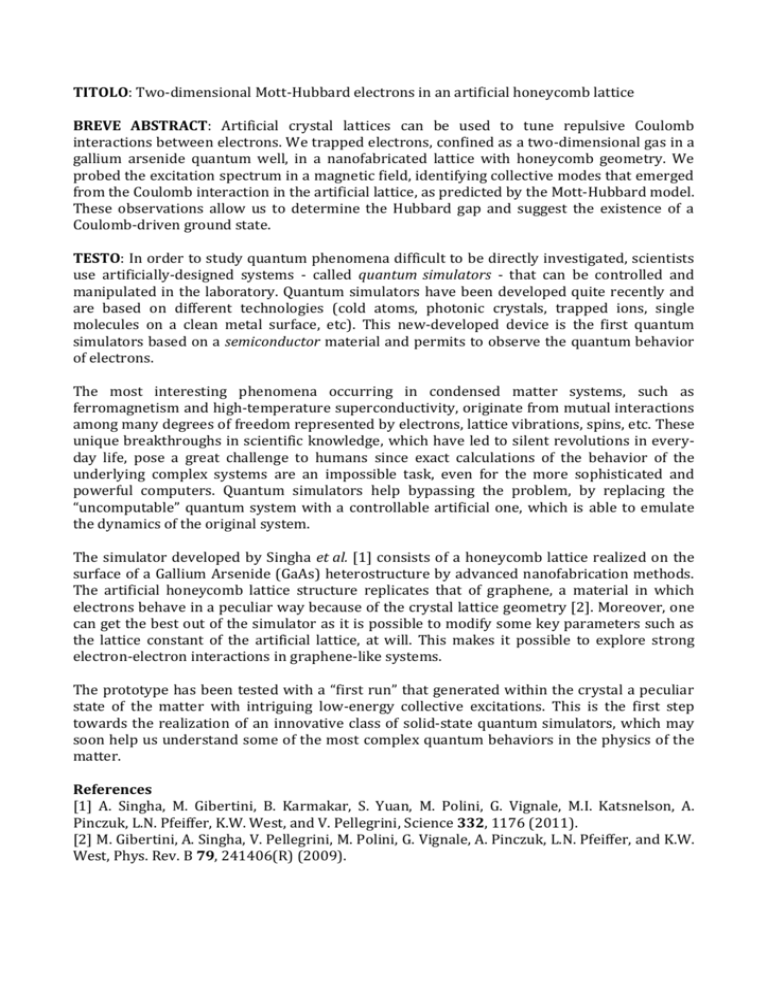
TITOLO: Two-dimensional Mott-Hubbard electrons in an artificial honeycomb lattice BREVE ABSTRACT: Artificial crystal lattices can be used to tune repulsive Coulomb interactions between electrons. We trapped electrons, confined as a two-dimensional gas in a gallium arsenide quantum well, in a nanofabricated lattice with honeycomb geometry. We probed the excitation spectrum in a magnetic field, identifying collective modes that emerged from the Coulomb interaction in the artificial lattice, as predicted by the Mott-Hubbard model. These observations allow us to determine the Hubbard gap and suggest the existence of a Coulomb-driven ground state. TESTO: In order to study quantum phenomena difficult to be directly investigated, scientists use artificially-designed systems - called quantum simulators - that can be controlled and manipulated in the laboratory. Quantum simulators have been developed quite recently and are based on different technologies (cold atoms, photonic crystals, trapped ions, single molecules on a clean metal surface, etc). This new-developed device is the first quantum simulators based on a semiconductor material and permits to observe the quantum behavior of electrons. The most interesting phenomena occurring in condensed matter systems, such as ferromagnetism and high-temperature superconductivity, originate from mutual interactions among many degrees of freedom represented by electrons, lattice vibrations, spins, etc. These unique breakthroughs in scientific knowledge, which have led to silent revolutions in everyday life, pose a great challenge to humans since exact calculations of the behavior of the underlying complex systems are an impossible task, even for the more sophisticated and powerful computers. Quantum simulators help bypassing the problem, by replacing the “uncomputable” quantum system with a controllable artificial one, which is able to emulate the dynamics of the original system. The simulator developed by Singha et al. [1] consists of a honeycomb lattice realized on the surface of a Gallium Arsenide (GaAs) heterostructure by advanced nanofabrication methods. The artificial honeycomb lattice structure replicates that of graphene, a material in which electrons behave in a peculiar way because of the crystal lattice geometry [2]. Moreover, one can get the best out of the simulator as it is possible to modify some key parameters such as the lattice constant of the artificial lattice, at will. This makes it possible to explore strong electron-electron interactions in graphene-like systems. The prototype has been tested with a “first run” that generated within the crystal a peculiar state of the matter with intriguing low-energy collective excitations. This is the first step towards the realization of an innovative class of solid-state quantum simulators, which may soon help us understand some of the most complex quantum behaviors in the physics of the matter. References [1] A. Singha, M. Gibertini, B. Karmakar, S. Yuan, M. Polini, G. Vignale, M.I. Katsnelson, A. Pinczuk, L.N. Pfeiffer, K.W. West, and V. Pellegrini, Science 332, 1176 (2011). [2] M. Gibertini, A. Singha, V. Pellegrini, M. Polini, G. Vignale, A. Pinczuk, L.N. Pfeiffer, and K.W. West, Phys. Rev. B 79, 241406(R) (2009). IMMAGINI con DIDASCALIE: Fig. 1: a) Scanning electron microscopy (SEM) image of the semiconductor artificial lattice. An expanded view of the SEM image showing a single honeycomb cell (2r ~ 60 nm, a ~ 130 nm). The two-dimensional electron gas is positioned ~ 170 nm below the surface with a lowtemperature mobility of 2.7 × 106 cm2/(V s). We also sketch a cartoon of the two-dimensional potential trap for electrons induced by the nanofabricated pillar at the surface. b) Geometry of the light scattering experiment: ωL,S labels the incident (scattered) photon energy and θ = 5˚ is the tilt angle. c) Resonant inelastic light scattering spectra showing the cyclotron mode and the new low-lying collective mode at B = 5.48 T and T = 1.7 K. d) Evolution of the energies of the cyclotron mode (black filled circles) and of the new collective mode at frequencies ωHB (red filled squares) at T = 1.7 K. The black dashed line is a linear fit to the data using ωc = eB/(mb c). We find mb = 0.067 me with me the bare electron mass, in agreement with the bulk GaAs value. The red dashed line is a fit with ωHB = α B1/2. Fig. 2: a) A cartoon of the spectral function A(ω) of the patterned/unpatterned 2DEG (red/black). The Landau level peaks at ω = ωc(n + 1/2) are split by on-site Coulomb interactions into Hubbard lower and upper peaks, which are separated by U~e2/lB, where lB is the magnetic length. b) The relevant electronic process which contributes to the Raman scattering cross section. The initial state is labeled by |1>, the final state by |2>, while the intermediate state with one hole and an extra electron is labeled by |n>. The final excited state is separated from the ground state by the Hubbard charge gap U, i.e. by the energy cost of having two antiparallel spin electrons on the same site. In the intermediate state we have also depicted the absorbed (at frequency ωL) and emitted (at frequency ωS) photons. The square wells denote two neighboring minima of the artificial-lattice potential. The core levels are not shown. The green areas denote valence-band electrons, which are assumed to be unaffected by the periodic modulation. AUTORI, AUTORE DI RIFERIMENTO (CON CONTATTO) E PERSONE COINVOLTE: Autori: A. Singha, M. Gibertini, B. Karmakar, S. Yuan, M. Polini, G. Vignale, M.I. Katsnelson, A. Pinczuk, L.N. Pfeiffer, K.W. West, and V. Pellegrini Autori di riferimento: Marco Polini, e-mail: m.polini@sns.it, skype id: mp_sns; Vittorio Pellegrini, e-mail: vp@sns.it, skype id: vpellegrini69. Personale CNR-NANO coinvolto: A. Singha (now at the Department of Physics, Bose Institute, 93/1 Acharya Prafulla Chandra Road, Kolkata 700009, India), M. Gibertini, B. Karmakar, M. Polini, and V. Pellegrini.


